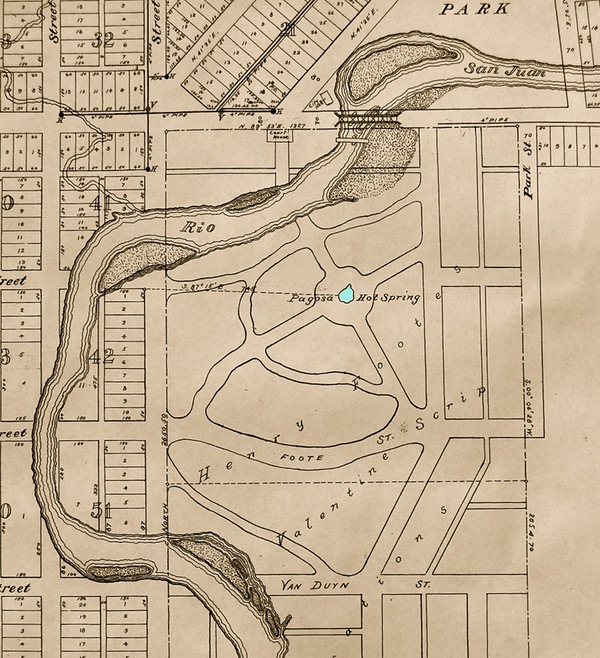Essentially, Chicago’s extensive use of TIF can be interpreted as the siphoning off of public revenue for largely private-sector purposes. Although TIF proponents argue that the public receives enhanced economic opportunity in the bargain, the findings of this paper show that the bargain is in fact no bargain at all.
— from “Does Chicago’s Tax Increment Financing (TIF) Program Pass the ‘But-For’ Test?” by professor William Lester, University of North Carolina, 2013.
We got a phone call last week from a gentleman named Tom Tresser, who works with the ‘TIF Illumination Project’ in Chicago… Ground Zero, apparently, for questionable TIF financing schemes. Chicago started doing TIF projects in 1986, when about $2 million in local taxes were diverted to help fund “urban renewal” in the city. By 2013 the annual diversions — away from schools and fire departments and government services, and into the pockets of developers — had risen to $422 million. Per year.
If that rate were maintained for 25 years, Chicago’s tax-funded entities would miss out on $10.5 billion dollars.
Currently, over 30 percent of the city’s total area has been included in some type of TIF financing scheme.

Mr. Tresser wanted to assure me that, based on the research done by his grassroots citizens group over the past 6 years, the answer to my question — “Are Tax Breaks Making Colorado Broke?” — is “Yes.”
He’s not the only one making such a claim. In 2013, a University of North Carolina professor, William Lester, wrote a 39-page white paper, analyzing whether the TIF projects in Chicago had produced any community benefits, compared to other areas of the city where no TIF schemes exist. He concluded:
“Overall, TIF failed to produce the promise of jobs, business development, or real estate activity at the neighborhood level beyond what would have occurred without TIF. This finding is made by comparing fundamental economic development outcomes in block groups that received TIF designation to those that did not, controlling for the initial underlying characteristics of these neighborhoods. Furthermore, when we measure the impact of actual TIF funded investments, we still find no evidence that TIF effectively obtained desired economic development outcomes.”
You can download professor Lester’s 3-page Conclusions here, or read the entire 39-page report here.
A few citizens in Pagosa have publicly expressed their belief that TIF financing is a bad idea, no matter where it might take place in Colorado, — and the TIF Illumination Project and Professor Lester’s study suggest the same. So far, the Town Council has been reacting to information provided by the Springs Resort and its consultants, as well as to reports provided by opponents of the proposed ‘Urban Renewal’ project on Hot Springs Boulevard, and everyone seems to be involved in a huge learning curve.
Last Thursday evening, we heard more than one Council member suggest that the very first decision facing the Town is whether an Urban Renewal Authority ought to be created, regardless of whether the Springs Resort plan is worthy of support. That decision would seem to hinge on whether the Council believes TIF financing schemes are helpful to a community’s overall economic and social health. We know they are helpful to developers. Are they helpful, or harmful, to the rest of the community?
If we can’t find definite evidence that TIFs are in fact harmless to the surrounding community, then maybe we ought to take a pass?

We know that TIF schemes can encourage development, but studies suggest it merely moves the development from one area of town to another, with no overall benefit to the taxpayers or the economy.
So is development in one area of town “more valuable” to the overall economic and social health of the community than development in another area? Mr. Dronet and Mr. Searle are trying to make that case, and they’ve reminded us that the development of the travertine meadow adjacent to the Springs Resort was specifically mentioned in Chapter 7 of the Town’s 2017 Comprehensive Plan, on the same page with a brief discussion of TIF financing.
But the Town’s Comprehensive Plan unfortunately tries to be all things to all people, and is full of conflicting goals, such as the goal of preserving our “authentic” small-town character… while also encouraging the expansion of a tourism economy — a process that destroys authentic neighborhoods.
One of the obvious conflicts in the plan is between focusing development in areas where infrastructure already exists — while at the same time encouraging development where infrastructure does not exist, such as on the vacant 27 acres on Hot Springs Boulevard.
Target investment and development in the Downtown and other areas with existing infrastructure
- Promote development on underdeveloped and vacant parcels within the Town in locations with existing infrastructure.
- Identify parcels that are in foreclosure or owe back taxes as opportunity sites for the Town to purchase and re-sell to developers as a way to incentivize housing and/or mixed-use development.
- Encourage development in areas that have adequate water, sewer, roads, sidewalks and trails to reduce the need for additional infrastructure…
We understand that development in one area of town is often “more expensive” than development in another area, which might be one reason the travertine rock meadow adjacent to the Springs Resort has never been developed in Pagosa’s 136-year history. Does it make sense to incentivize, with tax giveaways, development of the most expensive properties — while doing nothing to encourage development in places where infrastructure is already available?
I have my opinion. Maybe you have yours as well.
We shared this 1883 plat of downtown Pagosa in an earlier installment, showing a relaxed series of meandering, park-like walking paths spread across the vacant meadow that now belongs to developer Jack Searle.

Could it be, that the original survey of the town presented us with the very best use for this, the “heart of downtown”?
And is developer David Dronet trying to shove a square peg into a round hole?

